Total Cholesterol Blood Test Kit
£12.99 Original price was: £12.99.£10.99Current price is: £10.99.
Designed to check the concentration of total cholesterol in blood. This home health test is perfect for screening and early detection of cholesterol disorders.
What is Cholesterol?
Cholesterol is a soft waxy substance which is required by the body to keep itself healthy, but too much cholesterol circulating in the blood is a health risk. As cholesterol is not water-soluble it must bind to special proteins before it can be carried in the bloodstream. These special proteins are called lipoproteins, there are 2 main types of lipoproteins, High density lipoproteins (HDL) and Low density lipoproteins (LDL). HDL cholesterol is known as “good” cholesterol because it seems to carry the cholesterol away from your heart and blood vessels, preventing the narrowing of the arteries. LDL is known as “bad” cholesterol as it is the type most likely to build up on artery walls.
Why do I need this test?
If the cells in the body are given more cholesterol than they can use, they have no way of getting rid of the excess and so the unused cholesterol can form deposits in the coronary arteries, which restricts blood flow to the heart. This condition is known as arteriosclerosis and is the leading cause of coronary heart disease. For more information and other risk factors of heart disease.
Reducing a high cholesterol level can reduce the chance of dying of a heart attack or stroke in people who have coronary diseases, as well as those individuals who have no evidence of heart disease. Therefore, evidence indicates that monitoring whole cholesterol is in the interest of everyone.
How often should my cholesterol levels be checked?
There are conflicting opinions as to how often cholesterol should be tested. You can ask your doctor for advice on how often he/she recommends you have your cholesterol tested. It is usually recommended that cholesterol testing should be performed on all adults aged 20 years and older.
Contents:
- 2 x sealed pouches containing 1 Test Device
- 2 x Sterile Lancet
- 1 Instruction Set
Procedure
1) Wash your hands well with soap and warm water (in order to increase blood flow to your finger) and dry thoroughly. Tear the protective pouch (from the notch) and only get out the device. Dispose of the small desiccant bag.
2) Push the orange small rod into the body of the lancet until hearing a CLICK indicating the device is activated. – fig. A Be careful not to push the trigger because the needle can come out too early.
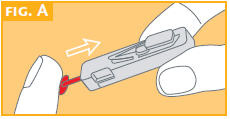
3) Remove the orange rod by turning it on the left or on the right. – fig. B
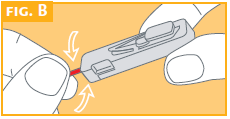
4) Massage the end of the finger, from the base of the finger to the end, to enhance the blood flow.
5) Strongly press the extremity of the lancet on the part of the finger which is cleaned with alcohol in order to obtain a very good contact.
Press on the trigger button. – fig. C. The tip retracts automatically and safely after use.
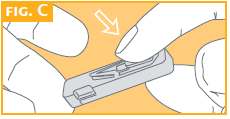
6) Keeping the hand down massage the end that was stung to obtain a blood drop. – fig. D
It is important to get a “good” fingerstick in order to run the test. If you are uneasy about pricking your finger, you might consider having a friend or spouse do this for you.
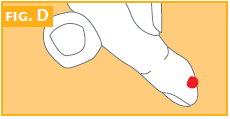
7) Allow one big drop of blood to fall on the test field. Ensure that your fingertip itself does not touch the test field. The Test Area should be completely saturated.
If you are unsure about the amount of blood, add another drop. If insufficient blood is used or the test field is touched, the separation membrane might not work properly.
fig. E
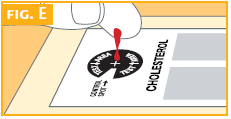
8) Make sure the CONTROL SPOT changes to red in 15 seconds after the blood is applied. If this does not happen, apply another drop of blood.
CONTROL SPOT must change color to red to ensure that enough blood was added. – fig. F
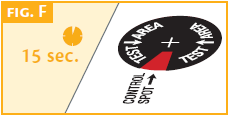
9) Now wait 3 minutes.
Test readings may be too high if you wait too long, or too low if you do not wait long enough. – fig. G
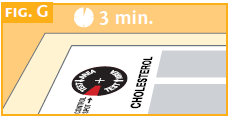
Result Interpretation
- Gently pull the cover off the card starting where indicated with the black bar. – fig. 1
- The focus point will be displayed as soon as the cover is completely removed. – fig. 2
- Now within maximum 30 seconds move the colour chart until it shows the colour or colour intensity that corresponds best to the colour of the focus point. – fig. 3
- Turn the whole card over to find your estimated cholesterol level displayed in mg/dL or mmol/L in the left respectively right window in the guides of the colour chart. If you find it difficult to determine the matching colour field, apply the principle of elimination, determining which colour fields do not match, until only one field is left. – fig. 4
- DISPOSAL: after you get your results, place the contents of the kit back into the original box and dispose of with your normal household waste products.
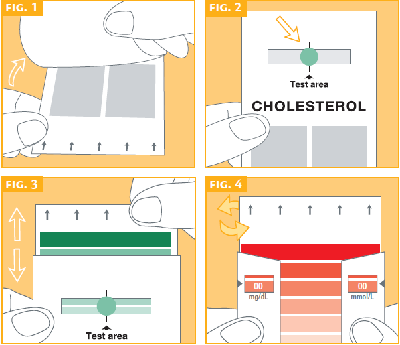
NORMAL VALUE : BELOW 200 mg/dL (5.2 mmol/L)
DESIRABLE result: this is a LOW RISK area. You should maintain a healthy diet, exercise regularly and monitor your cholesterol periodically.
BORDERLINE – HIGH VALUE: 200 – 250 mg/dL (5.2 – 6.5 mmol/L)
This is a MODERATE RISK area. You should not become unnecessarily alarmed as there are other factors, such as your general state of health, smoking habits, age, weight, etc., that have to be considered.Test yourself again in 1 – 8 weeks. If the result is again in the Borderline – High area, see your doctor for accurate assessment and advice.
HIGH VALUE: ABOVE 250 mg/dL (6.5 mmol/L)
This is a HIGH RISK area. You should contact your doctor for accurate assessment and advice, if you are not already under a doctor’s care for high cholesterol.
NON-VALID RESULT
The test is invalid if the result indicator has not turned green. Possible reasons for an invalid test result include a mistake when performing the test. Repeat the test with a new kit of cholesterol test, If no color change is observed in the repeated test, your cholesterol may be at or below 125 mg/dL, or the there is problem with the test you are using. Please contact the distributor.
Questions and Answers
THE RESULT INDICATOR IS NOT UNIFORM IN COLOUR. THERE ARE DARKER AND LIGHTER GREEN AREAS. HOW DO I INTERPRET THE TEST? Choose the areas which, taken together, are larger. NOTE: Small reddish-brownish areas indicate that erythrocytes (red blood cells) have come into contact with the result indicator. Ignore these areas when interpreting the test result.
THE TEST RESULT CAN BE DETERMINED EITHER IN MG/DL OR IN MMOL/L.
It is reccommended to always use the same measuring units if you want to compare future results.
WHAT IF MY CHOLESTEROL LEVEL IS HIGHER THAN THE INDICATED NORMAL RANGE?
You should take the result seriously, although a one-off raised level is not particularly meaningful. If your cholesterol level appears high, you should see your doctor, who will repeat the test using another method which may involve distinguishing between HDL (high-density cholesterol) and LDL (low-density cholesterol) as well as the triglyceride levels in your blood, in order to better assess your risk of arteriosclerosis. It might be helpful to take these instructions for use with you to your doctor in order to give a better idea of the test you have performed yourself.
SHOULD MY RESULTS VARY?
Cholesterol Readings can vary daily because of many different factors. It would not be unusual for results in some individuals to vary 10-20% over a period of time because of various reasons, such as stress, recent diet, rest/exercise, and other biological factors, etc.
WHAT IS THE DIFFERENCE BETWEEN “GOOD” AND “BAD” CHOLESTEROL?
Cholesterol travels in the blood in “packages” of fat and protein called lipoproteins. The two main types are HDL and LDL. HDL (High Density Lipoprotein) – often called “good” cholesterol because it appears to clear excess cholesterol from the arteries. LDL (Low Density Lipoprotein) – often called “bad” cholesterol, because it tends to build up on artery walls.
Related Products
3 reviews for Total Cholesterol Blood Test Kit
| 5 star | 100 | 100% |
| 4 star | 0% | |
| 3 star | 0% | |
| 2 star | 0% | |
| 1 star | 0% |

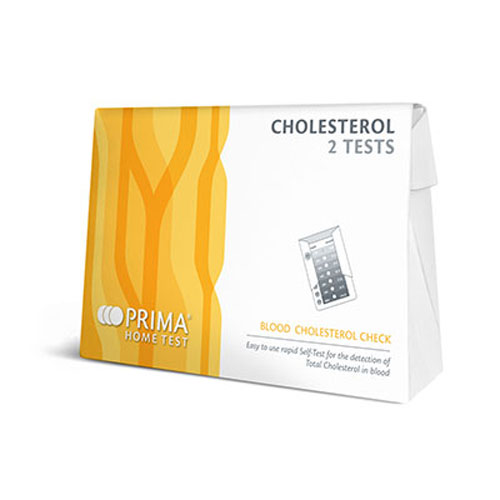
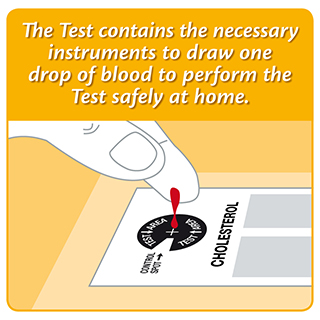
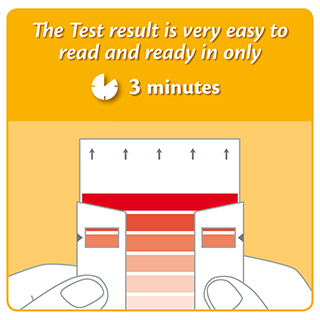
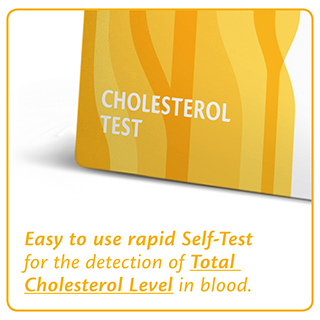
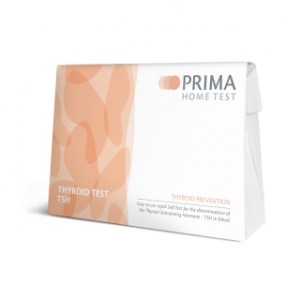
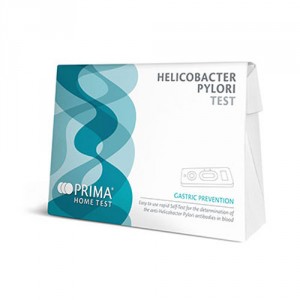
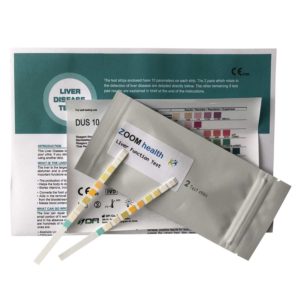
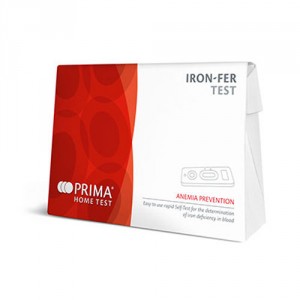
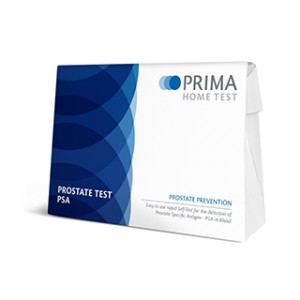
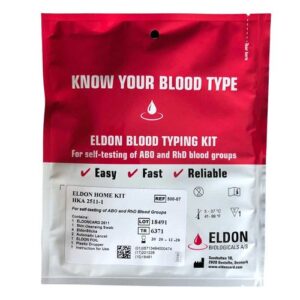
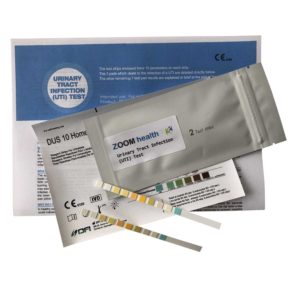
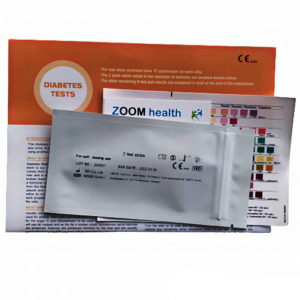

Helen (verified owner) –
All good. Thought I was brave but can’t believe what a wuss I was using the lancet lol! I think it was the spring action that I found scary! One tip. Don’t think you can test the lancet on something else first as they only last once. Oh and it’s not that scary once you use it!
Anonymous (verified owner) –
Alexis –
I have used the Total Cholesterol Blood Test Kit to measure total cholesterol twice now, and both times it was easy to use, and very accurate. The accuracy was always within 5-10% of a follow up laboratory test with my doctor. I have had so much success with the Total Cholesterol Blood Test Kit that I will use this going forward on a regular basis. The test itself is very simple and easy to use as well. The test kit gives me a good indication if I am on the right track with my diet to keep my cholesterol in check. Highly recommend.